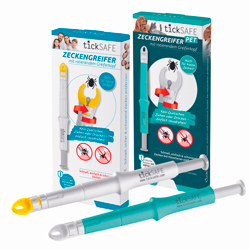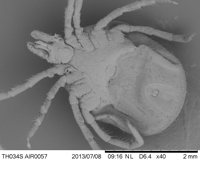Dear Colleagues,
The Tickgripper has been developed from practice and has proven itself for years.
Squeezing a tick by tweezers, forceps, fingernail or other rigid materials exposes the body of a tick, including its intestine and salivary glands, where the infectious material is located, to very high pressure. Removing a tick in such a manner increases the risk of transmitting infectious tick pathogens.
In 2010, Klaus Robisch from the University of Veterinary Medicine Vienna published a diploma thesis in which he comes to the following conclusion:
"Considering all the criteria, devices which remove ticks by rotation have to be given preference over those that remove the ticks by traction."
The advantage of twisting has been established in 2012 by Duscher, Peschke and Tichy: "Mechanical tools for the removal of Ixodes ricinus female ticks - differences of instruments and pulling or twisting?"
An overview of the methods of removing ticks can be found on this poster.
Based on these findings tickSAFE has equipped the tickgripper with a replaceable, rotating, flexible gripper head. With this patented technology the Tickgripper is the only device which fulfils all above mentioned criteria of careful tick removal.
With kind regards,
Dr. Matthias Meinhold
Physician and Physicist
P S When removing ticks professionally in a hospital or medical practice, an exchange of the gripper head is required due to hygiene guidelines.
Images of Tick Removal (click pictures to enlarge)
Publication of images by courtesy of the Institute of Zoology, University of Kiel, Germany Working Group Functional Morphology and Biomechanics (Director Prof. Dr. rer. nat. Stanislav N. Gorb)
Removal with tweezers. Tick in the supine position, magnification 40x
The tweezers' impression is clearly visible on the belly
Removal with thumb and index finger. Tick in the supine position, magnification 40x
Due to the removal, the head and the right front leg were separated from the tick and likely remained in the host's skin.
Removal with Tickgripper. Tick in the supine position, magnification 40x
The right pedipalpe (pine sensor) is separated from the tick. The hypostome (engraving tool) has remained largely intact.










